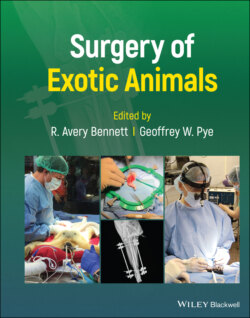Читать книгу Surgery of Exotic Animals - Группа авторов - Страница 96
Insects
ОглавлениеThis is by far the largest group of invertebrates at nearly 1 million described species and possibly the most economically important. Insects are loved and despised worldwide and occupy nearly all niches, except the marine environment. They are important as a human food source in parts of the world and both sustain and destroy agricultural crops, depending on the species of insect and plant. For these reasons, they have been well studied with regards to diseases and pathology (Boucias and Pendland 1999; Cooper 2012). Probably no species has been more thoroughly studied than the domestic honeybee, Apis mellifera (Vidal‐Naquet 2012, 2015). Despite this, virtually nothing traditionally considered surgery, has been published for insects. As with other invertebrates, a fair amount of literature exists describing techniques and procedures where insects are utilized for research and modeling purposes. A 1985 study (Endo et al. 1985) describes “etherized larvae fixed on wooden beds with threads” followed by bisection of the brain and removal of the right lobe. This technique was part of a photoperiod study.
For microsurgery, vibrating glass stylets have been used with insects (Gödde 1989). This technique is primarily used to produce very small lesions (to 0.1 μm) on various insect tissues.
Another area of increasing interest and work is hybrid insect robots (Sanchez et al. 2015). Researchers insert tiny electrodes into various neural ganglia in order to stimulate roach behaviors (Figure 4.10). While this is not veterinary surgery in the strictest sense, it does require skill, experience, and, in some cases, surgical dissection through tissue.
Figure 4.10 This cockroach (Blaberus discoidalis) has been outfitted with a battery‐powered pack and two electrodes entering its pronotal area and inserting into the prothoracic ganglion. This roach/robot hybrid could be controlled remotely to change direction.
Source: Sanchez et al. 2015.
